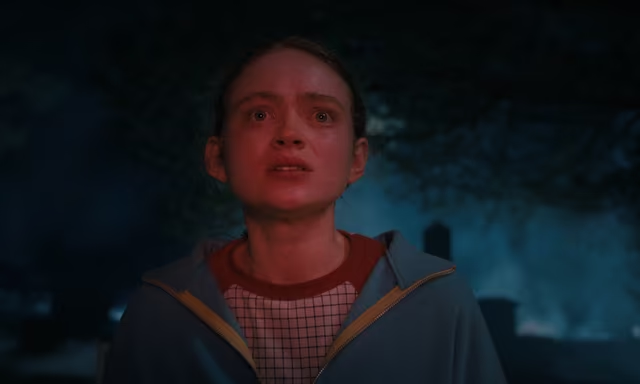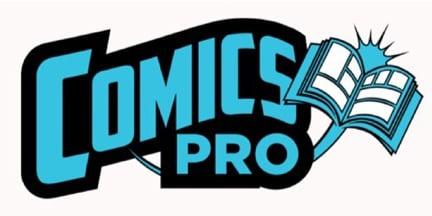If you click on a link and make a purchase we may receive a small commission. Read our editorial policy.
The DCEU timeline: A complete chronology of DC’s cinematic universe
A complete timeline of every DCEU project, from Man of Steel to Aquaman and the Lost Kingdom.

Popverse's top stories
- DC to reveal the secret history of the Absolute Universe, and how it changes Superman's place in it all
- Watch now: Warner Bros.'s official Mortal Kombat II panel from NYCC 2025
- Sadie Sink's Max Mayfield Is the True Hero of Stranger Things — and could be the heart of the show’s series finale
The DC Extended Universe (DCEU) is an exciting film franchise that has captivated audiences worldwide. From 2013 through 2023, Warner Bros. brought many iconic superheroes and thrilling stories to the big screen (and a streaming series!). Like the DC Comics they draw inspiration from, the DCEU quickly grew into a vast and intricate universe.
However, keeping track of the chronology can be challenging, as the release order does not always align with the timeline. In fact, some films take place across multiple years. Not to worry, Popverse has compiled this comprehensive DCEU timeline to help you navigate the world of gods, monsters, heroes, and villains.
Please note, this is meant to be a thorough breakdown of the DCEU timeline, not a watch order. If you’re looking for a watch order for the DCEU, please refer to this guide.
If a film or television show is listed under a certain year, that means that the main narrative takes place during that year. Some movies take place over multiple years. If a film contains a timeskip or flashback, we will list the film across multiple years. In these cases, we’ll add a note if the scene is a prologue or a flashback.
With that in mind, let’s begin our journey through the DCEU…
The DCEU Timeline: Before Zod’s invasion

This portion of the timeline covers the DCEU’s backstory. This mostly includes flashback scenes set before Man of Steel. This period includes the rise of Black Adam, Darkseid’s original assault on the galaxy, Wonder Woman’s early adventures, and other superhero origins.
- Thousands of years ago: Man of Steel (destruction of Krypton) and Wonder Woman (Amazon origins)
- 3000 BC: Justice League/Zack Snyder’s Justice League (Mother Box war flashback)
- 2600 BC: Black Adam (origin flashbacks)
- Unknown dates: Wonder Woman and Wonder Woman 1984 (Diana childhood flashbacks)
- November 1918: Batman v. Superman: Dawn of Justice (Wonder Woman war photo) and Wonder Woman (main story)
- December 1918: Etta’s Mission (Blu-ray special feature)
- December 1974: Shazam (young Sivana flashback)
- 1980: Man of Steel (Clark’s ship reaches Earth. Note: The Man of Steel novelization explains that time warps accounted for him not aging)
- April 1981: Batman v. Superman: Dawn of Justice (death of Thomas and Martha Wayne flashback)
- July 1984: Wonder Woman 1984 (main story)
- December 1984: Wonder Woman 1984 (epilogue)
- 1985: Aquaman (Tom Curry and Atlanna flashback)
- 1986: Aquaman (baby Arthur flashback)
- September 1988: Man of Steel (elementary school flashback)
- Early 1990s: Peacemaker (childhood flashbacks)
- March 1992: Man of Steel (bullying flashback)
- October 1992: Man of Steel (bus crash flashback)
- 1995: Aquaman (young Arthur at aquarium flashback)
- April 1997: Man of Steel (death of Jonathan Kent flashback)
- 1999: Aquaman (young Arthur underwater flashback)
- 2002: Aquaman (Arthur training flashback)
- June 13, 2004: The Flash (murder of Nora Allen)
- December 2009: Shazam (young Billy is abandoned by his mother)
- October 2012: Man of Steel (oil rig scene)
The DCEU Timeline: Uniting the League

This portion of the timeline covers the first phase of DCEU films, leading up to the formation of the Justice League. Notable events include Zod’s attack on Earth, the death of Superman, Amanda Waller forming Task Force X, and of course, the Justice League coming together.
- September 2013: Man of Steel (main story), (Batman v. Superman: Dawn of Justice (Zod invasion flashback), and The Flash (middle act)
- February 2015: Justice League (Superman podcast interview)
- Spring 2015: Zack Snyder’s Justice League (Cyborg origin flashback)
- June 2015: Batman v. Superman: Dawn of Justice (Diana Prince security camera footage)
- November 2015: Batman v. Superman: Dawn of Justice (main story) and Zack Snyder’s Justice League (Mother Box explosion prologue)
- 2016: Wonder Woman (present day framing sequence)
- June 2016: Suicide Squad
- July-August 2017: Justice League/Zack Snyder’s Justice League (main story)
The DCEU Timeline: Heroes and villains

This period covers the films released after Justice League. At this point the DCEU had moved on from telling a Justice League origin story and began producing films centered around the various heroes and villains in their cinematic universe. This includes a film starring Harley Quinn, origin stories for new heroes like Shazam and Blue Beetle, and solo films starring JL members like Aquaman and Flash. Of course, this period also covers the end of the DCEU, as Barry Allen’s time traveling causes the universe to change – or does it? More on that later…
- June 2018: Aquaman
- December 2018: Shazam (main story)
- 2020: Birds of Prey (and the Fantabulous Emancipation of One Harley Quinn) and Crisis on Infinite Earths (DCEU Flash cameo) (Note: Part of the Arrowverse continuity, but crosses over into the DCEU)
- 2021: The Suicide Squad
- Sometime in 2021: Aquaman and the Lost Kingdom (birth of Arthur Curry Jr. flashback)
- Early 2022: Peacemaker
- 2022: Black Adam (main story) and Aquaman and the Lost Kingdom (main story)
- May 2022: Shazam! Fury of the Gods
- Late 2022: The Flash
- 2023: Blue Beetle
- Sometime in a possible future: Batman v. Superman: Dawn of Justice (Knightmare flashforward) and Zack Snyder’s Justice League (Knightmare flashforward)
The DCEU Timeline: How we came up with these dates

We used a variety of resources to build this timeline. We determined the dates using context clues within the films, social media posts from the filmmakers (hi James Gunn), tie-in media, and resources such as the DCEU Wiki. In addition, Watchtower Database put together an exhaustive video which served as an invaluable resource.
As Watchtower Database’s video points out, there are a lot of contradictions surrounding the timeline. Remember, these movies were made by different filmmakers, and some of the small details don’t always line up. One example is The Suicide Squad, which has a phone screen indicating that the film takes place in 2020, while Gunn states that the movie is set in 2021. In this case, Popverse went with 2021 because that’s what the director said. In other cases, we used educated guesses, and went with dates that made the most sense. In other cases, such as Birds of Prey, there were no clues for dates, so we placed the film in the year of its release.
However, there are some discrepancies, and our timeline may not match similar ones online. Due to the massive contradictions, no DCEU timeline will ever be perfect. When in doubt, blame Barry Allen’s time traveling.
The DCEU Timeline: Which version of Justice League is canon?

Remember what we said about chronological contradictions? Justice League is one of them. There are two versions of Justice League, the 2017 theatrical film directed by Joss Whedon, and the 2021 director’s cut from Zack Snyder. The Flash explicitly references events that were only seen in Zack Snyder’s Justice League, so it can be assumed that’s the canon version, right? Not so fast…
Snyder’s Justice League contains details about Aquaman’s backstory and the nature of Atlantis which don’t jive with the events of the 2018 Aquaman film. It’s worth noting that Snyder shot his footage in 2015 before James Wan filmed Aquaman.
Neither version of Justice League really works in the overall DCEU timeline, so I would suggest picking your favorite version, and blaming any contradictions on Barry’s time traveling.
The DCEU Timeline: What about Joker and The Batman?

You might be wondering why some DC movies like The Batman or Joker aren’t on this timeline. That’s because not every DC Comics film takes place in the DCEU. Projects like Joker take place in their universe, separate from other DCEU projects. Simply put, the Joaquin Phoenix Joker is not the same character as the Jared Leto Joker. Robert Pattinson’s Batman is not the same character as Ben Affleck’s Batman. The DCEU is just one of the many realities in DC’s cinematic multiverse. For a breakdown on which films are DCEU films, please refer to this guide.
The DCEU Timeline: Are Aquaman and the Lost Kingdom and Blue Beetle part of the DCEU?

Classification for Blue Beetle and Aquaman and the Lost Kingdom is a bit tricky. Part of the reason is because there is some contradictory statements from filmmakers, and because we’re currently mid-transition into a new DC cinematic universe.
In 2022 James Gunn and Peter Safran were named co-CEOs of DC Studios. Shortly after their hiring, Gunn and Safran announced a new slate of DC film projects, which would take place in their own continuity, separate from the DCEU. A January 2023 video from Gunn indicated that the time traveling events from The Flash would serve as the launching point for the new universe. If this was the case, then every film after The Flash would be a part of Gunn and Safran’s new DC Universe.
However, this doesn’t appear to be the case. The Flash ended with George Clooney playing Bruce Wayne in the new timeline. According to Gunn, Clooney’s cameo was a gag, and he won’t be the new cinematic Batman going forward. In other words, the ending of The Flash doesn’t take place in the new cinematic universe….just a new DCEU timeline.
In addition, Gunn has stated Blue Beetle is the “first DCU character,” but Superman: Legacy will be the “first DCU movie.” In other words, the Blue Beetle film isn’t a DCU film, but the character will be part of the DCU. In a post on Threads, Gunn further stated that nothing is canon before Creature Commandos and Superman: Legacy.
This raises some questions about some DC Studios projects, like season 2 of Peacemaker and the upcoming Waller series. Gunn has stated that those questions will be answered in time.
So, does this mean the DCEU ends with The Flash and its new timeline? Meanwhile the general fandom consensus seems to be that Aquaman and the Lost Kingdom is the end, due to it being the last project greenlit under the previous studio regime. Of course, going by that logic, wouldn’t Peacemaker season 2 (starring DCEU actors) count?
Right now, it’s all a bit of continuity spaghetti tangled in reboot ravioli. For the purpose of this list, we’ve placed Aquaman and the Lost Kingdom in the DCEU timeline since it appears to take place prior to The Flash, and the studio seems to be heralding it as the last DCEU film. Blue Beetle isn’t quite a DCEU film (it’s after The Flash timeline reset), but Gunn states it’s not a DCU film either. It’s a film without a cinematic universe to call home.
Since it was filmed with the DCEU in mind, and it was produced for the previous studio regime, we’re classifying it as a DCEU film. If any new evidence comes to light, we will update this guide accordingly.
Follow Popverse for upcoming event coverage and news
Find out how we conduct our review by reading our review policy
Let Popverse be your tour guide through the wilderness of pop culture
Sign in and let us help you find your new favorite thing.
















Comments
Want to join the discussion? Please activate your account first.
Visit Reedpop ID if you need to resend the confirmation email.